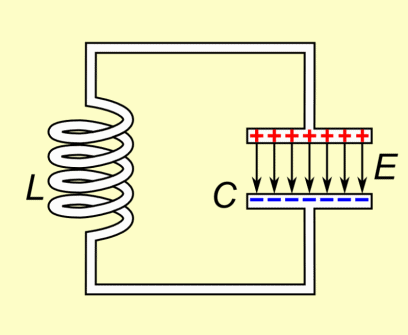In the general case the frequency of a wave and its kinetic energy are not related. As you can derive from Energizer 777's answer one can increase the frequency and this time decrease the amplitude of the wave generator and you approximately need the same amount of energy to support the damping of the wave from dissipation processes. The point is that an ideal harmonic oscillation process does not require any energy after it was started. So one has to divide the question into two questions.
How much energy one has to apply to a wave generator to get some frequency AND some amplitude of a wave in the case of a ideal harmonic oscillator? For water waves and a hollow body in the form of a ball (which is designed to stay on the surface of the liquid) the energy depends from the height you put the ball out from the water and from the elasticity characteristics of the liquid. This characteristics determine how fast the hollow body comes back to the equilibrated state (swimming height in the liquid). That means that there is a "natural" for this hollow body resonant frequence. But it is possible for you tp change this frequency by applying an additional force (additional to the gravitational force) to the body - how do you do it in a swing with his legs) and you get a forced vibration. At the first glance, in sum you do net gain energy to the system; pushing the ball downwards, at some moment you have to relax your hand and the ball pushes your hand back!
How much energy one has to apply to a wave generator to compensate the dissipation processes? Real systems are dumped, they dissipate energy. So you have a little more to push the ball as the ball pushes your hand back. The dissipation of a system is a very complex thing an it's much easier to measure the energy loss than to calculate it. The dissipation processes of a system as well as the elasticity of the medium have an influence to the maximum possible frequency of a system and to the maximum possible amplitude of the system.
So the energy you can gain from a wave amongst from over circumstances depends from the amplitude and the frequency of the wave. frequency alone is not enough to so say something about energy.
To fence in your question a little say you have a given wave generator and you are able to change the frequency of this generator. How much energy get lost in your system is the only question. Heat losses in the generator usually are in dependence from the frequency. Heat losses in the oscillator system are in dependence from the frequency. But again, if you are able to design an lossless harmonic oscillator circuit (and no one is able to do this), after you started the oscillation you do not contribute any energy to the system.
LC circuit from Wikipedia

